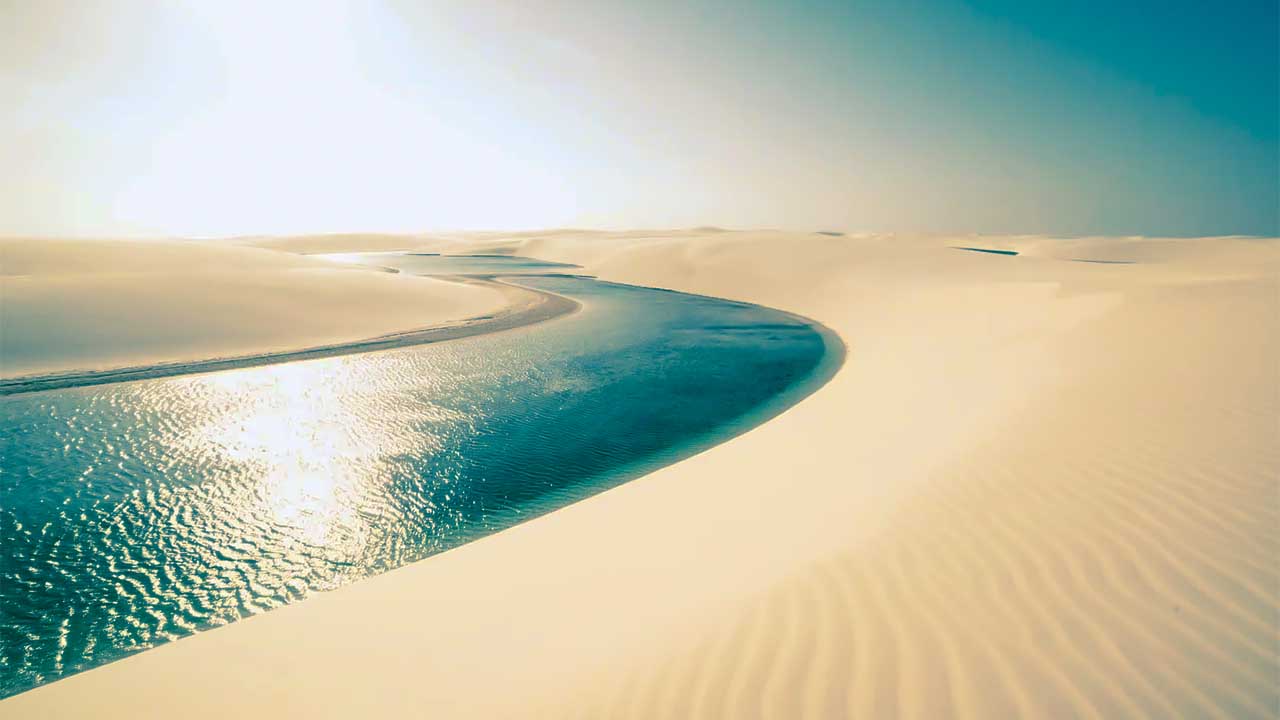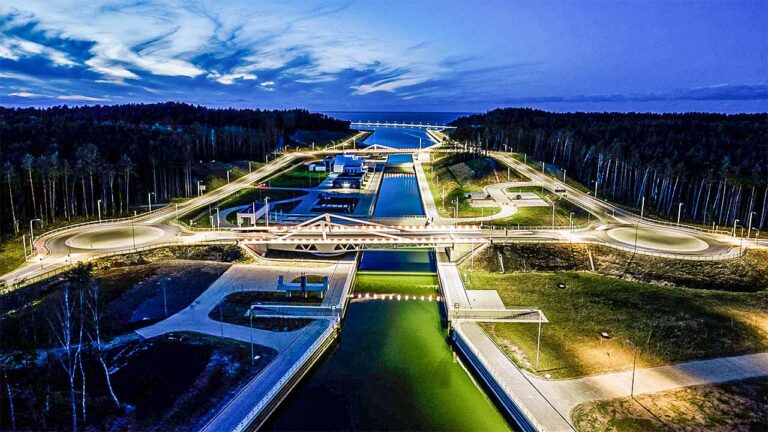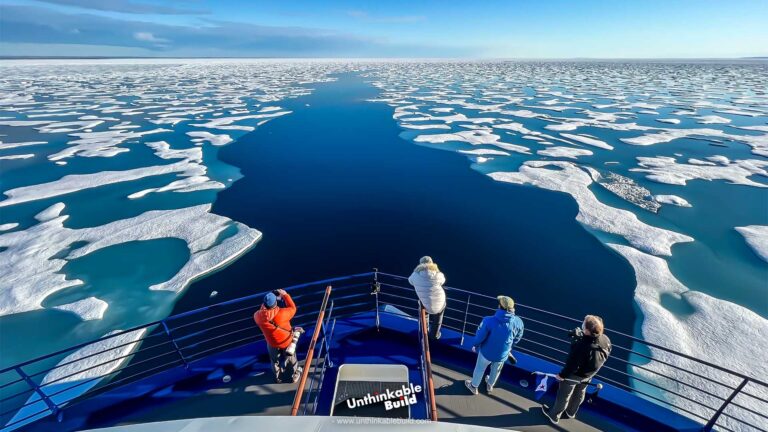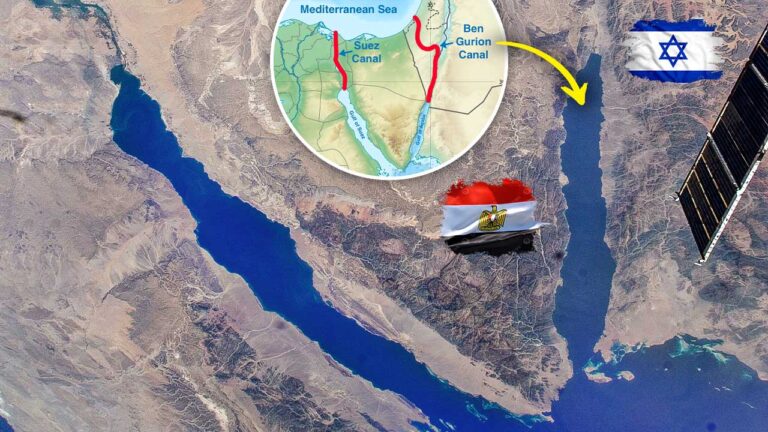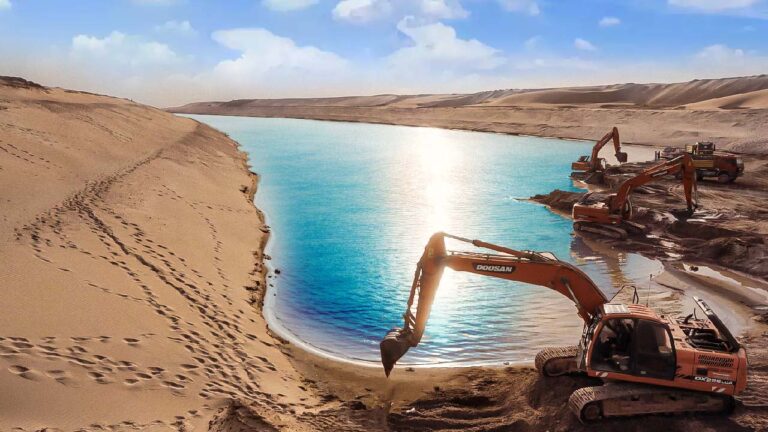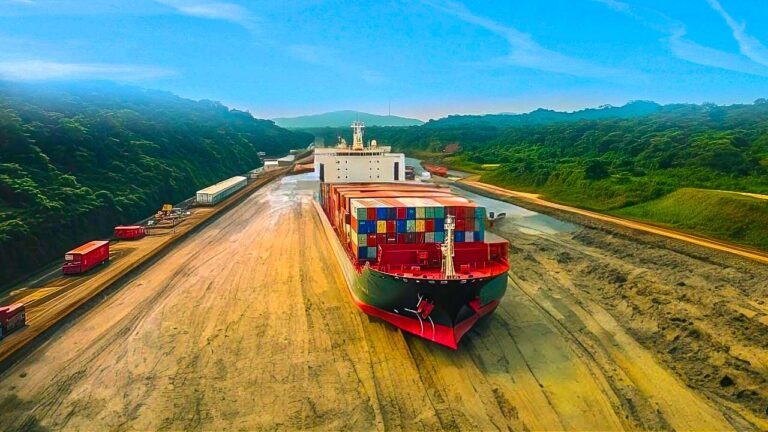Saudi Arabia is Building the Longest River in the Desert
In the vast expanse of our planet, rivers emerge as crucial arteries, serving as profound sources of both water and vital nutrients. They stand as integral components within the intricate framework of the water cycle, functioning as primary conduits for the dispersal of surface water. In the grand narrative of our planet’s geological evolution, rivers emerge as stalwart protagonists, shaping landscapes and nourishing ecosystems through a timeless interplay of water and earth.
In the expansive landscape of Saudi Arabia, a desert nation devoid of permanent rivers, it stands among the select 17 countries globally without these lifelines of freshwater within its borders.
Instead, the kingdom relies on a diverse array of alternative water sources to sustain its populace and industries. Among these alternatives, desalination takes precedence, drawing from the vast expanse of the sea to meet the nation’s pressing water needs. Saudi Arabia currently holds the title of the world’s largest producer of desalinated water, a feat facilitated by the operations of the state-owned Saline Water Conversion Corporation. With 27 desalination plants in operation, the kingdom churns out a staggering 106 million cubic feet of potable water each day, a testament to its ingenuity in addressing urban and industrial water demands amidst the arid landscape. These plants also generate 24.88 million Megawatt hours of electrical energy.
Saudi Arabia is embarking on the ambitious endeavor of creating an Artificial River to address its water scarcity challenges. While the Artificial River holds immense promise, it also raises questions about environmental impact, water management, and long-term sustainability.
Also Read: Etihad Rail – UAE’s $100 BN Railway Mega Project in Desert
In the realm of transformative environmental endeavors, experts project a near future where the deserts of Saudi Arabia undergo a remarkable transition into fertile grounds, facilitated by the advanced desalination technology. As this vision unfolds, one might inquire into the strategic plans set forth by Saudi Arabia in pursuit of this ambitious goal, and consider the additional benefits that may stem from the creation of this artificial river.
In the expansive realm of Saudi Arabia, the delicate balance between water and land unfolds against a backdrop of arid desolation and soaring temperatures. Spanning approximately 2.15 million square kilometers, this land is marked by a hot and dry climate, where evaporation reigns supreme and rainfall is a rare commodity, averaging between a scant 50-150 millimeters annually. In 2019, a mere 59 millimeters of rain fell, highlighting the challenge of sustaining life in this tropical and subtropical desert realm, where summer temperatures can blisteringly reach up to 55°C.
Against this backdrop, the pressures of population growth exacerbate the strain on precious water resources. As of December 2020, Saudi Arabia’s population stood at 35.04 million souls, with a growth rate of 1.59% that hints at a future burdened by even greater demands. By 2050, projections whisper of a swelling populace nearing 45 million, further testing the limits of available water supplies.
Groundwater, once a stalwart ally, now finds itself beleaguered by overexploitation, stretched beyond its natural replenishment rate. In response, the kingdom turns its gaze seaward, harnessing the vast potential of desalination technology to quench the thirst of its people. Saudi Arabia stands as the steward of 18% of the world’s desalinated water production, yet paradoxically ranks third globally in per capita freshwater consumption.
Yet, amidst the myriad challenges, glimmers of hope emerge. The Saline Water Conversion Corporation orchestrates a symphony of desalination across 27 stations, providing over 70% of the water used in cities and sustaining industrial needs. However, the path to water security demands more than technological prowess—it requires a commitment to sustainable practices, efficient water management, and ongoing investment in desalination technology.
In the story of Saudi Arabia’s water saga, the narrative of scarcity and resilience intertwines, shaping the destiny of a nation poised at the precipice of change. As the sands shift and the sun sets on another day, the imperative to safeguard water resources for future generations looms large, beckoning proactive measures and unwavering resolve.
In a bold endeavor to transcend the constraints of its arid landscape, Saudi Arabia sets its sights on an unprecedented feat: the conception of the world’s grandest potable water project. Envisioned as a monumental ‘river’ cutting through the desert, its dimensions are nothing short of staggering—4 meters deep, 11 meters wide and stretching a colossal 12,000 kilometers in length, a distance rivaling the mighty Nile in the neighboring Egypt.
To ensure the durability and efficacy of this ambitious undertaking, this underground project will use anti-corrosion pipes of remarkable scale to minimize evaporation losses, each boasting a diameter of 2.25 meters. In this audacious venture, Saudi Arabia aims not only to quench its own thirst but to carve a testament to human ingenuity and determination amidst the unforgiving sands of the desert.
In a grand display of engineering prowess, a sprawling network is poised to unleash an awe-inspiring torrent of water, churning out a staggering 9.4 million cubic meters each day. Beneath the bustling streets of Saudi cities, pipes snake their way, stretching an astonishing 126,000 kilometers—an endeavor so vast, it could encircle the Earth three times over.
At the heart of this ambitious endeavor lies cutting-edge desalination technology, poised to transmute the briny depths of seawater into life-giving freshwater. Its primary objective is to usher in a new era of agricultural abundance, quenching the thirst of crops and addressing the profound challenges of water scarcity that grip the region.
Also Read: Texas $30 Billion Dallas-Houston High-Speed Rail Project
In the grand vision of this project, the ambition extends far beyond mere irrigation. It seeks to revolutionize agriculture itself, ensuring a stable and sustainable water supply that will ripple through local communities and the environment alike, fostering resilience and prosperity.
Within the world of desalination, where innovation meets the sea, two fundamental techniques emerge as beacons of progress. Firstly, Reverse Osmosis unveils its scientific marvel. Here, seawater is propelled through a high-pressure membrane, selectively allowing water molecules to pass while blocking dissolved chemicals. Then, there’s Thermal Desalination, a method rooted in tradition. It harkens back to the past, gently warming water laden with salt, coaxing forth pure water vapor. What remains is the residue, the brine, cast aside to make way for clarity.
Both methods of desalination, Reverse Osmosis and Thermal Desalination, hold significant importance in addressing the global water scarcity challenge. Reverse Osmosis stands out for its efficiency and versatility, capable of producing large quantities of fresh water from seawater or brackish water with relatively low energy consumption. It has become the dominant technology in many regions due to its effectiveness in providing clean drinking water for communities and supporting agricultural and industrial needs. On the other hand, Thermal Desalination, while considered an older technology, still holds relevance, particularly in areas with abundant heat resources. Its ability to harness solar energy or utilize waste heat from industrial processes makes it a sustainable option in certain contexts. Moreover, Thermal Desalination plants often provide valuable co-products such as heat or electricity, contributing to overall energy efficiency. Both methods complement each other in diversifying water supply sources and play crucial roles in ensuring water security for communities worldwide.
Saudi Arabia, already a titan in the realm of desalination, the process of removing salt and impurities from sea water, holds the mantle of the world’s foremost producer of freshwater from the sea. Year after year, it churns out over 1.006 billion cubic meters of this precious resource, accounting for a staggering 18% of global production. At the helm of this aquatic juggernaut stands the Saline Water Conversion Corporation, a government-controlled entity orchestrating this monumental achievement, charting a course toward a future where water scarcity is but a distant memory.
In the depths of the Saudi Arabian desert, amidst the relentless expanse of arid terrain, a vision takes root—a vision of abundance in the midst of scarcity, of life flourishing where once only desolation reigned. With an estimated cost reaching a monumental $500 million, this ambitious endeavor stands as a testament to Saudi Arabia’s unwavering dedication to sustainability and the battle against water scarcity.
As the project nears completion, anticipation swells. For once realized, this subterranean marvel will stretch twice the length of the mighty Nile, heralding a new dawn of access to fresh, clean water for millions. Truly, it represents a remarkable milestone in humanity’s quest to conquer nature’s challenges and forge a brighter future for generations to come. Observing nations like Saudi Arabia, situated amidst vast deserts, underscores the invaluable blessing of clean water and underscores the weighty responsibility we bear in safeguarding it.

